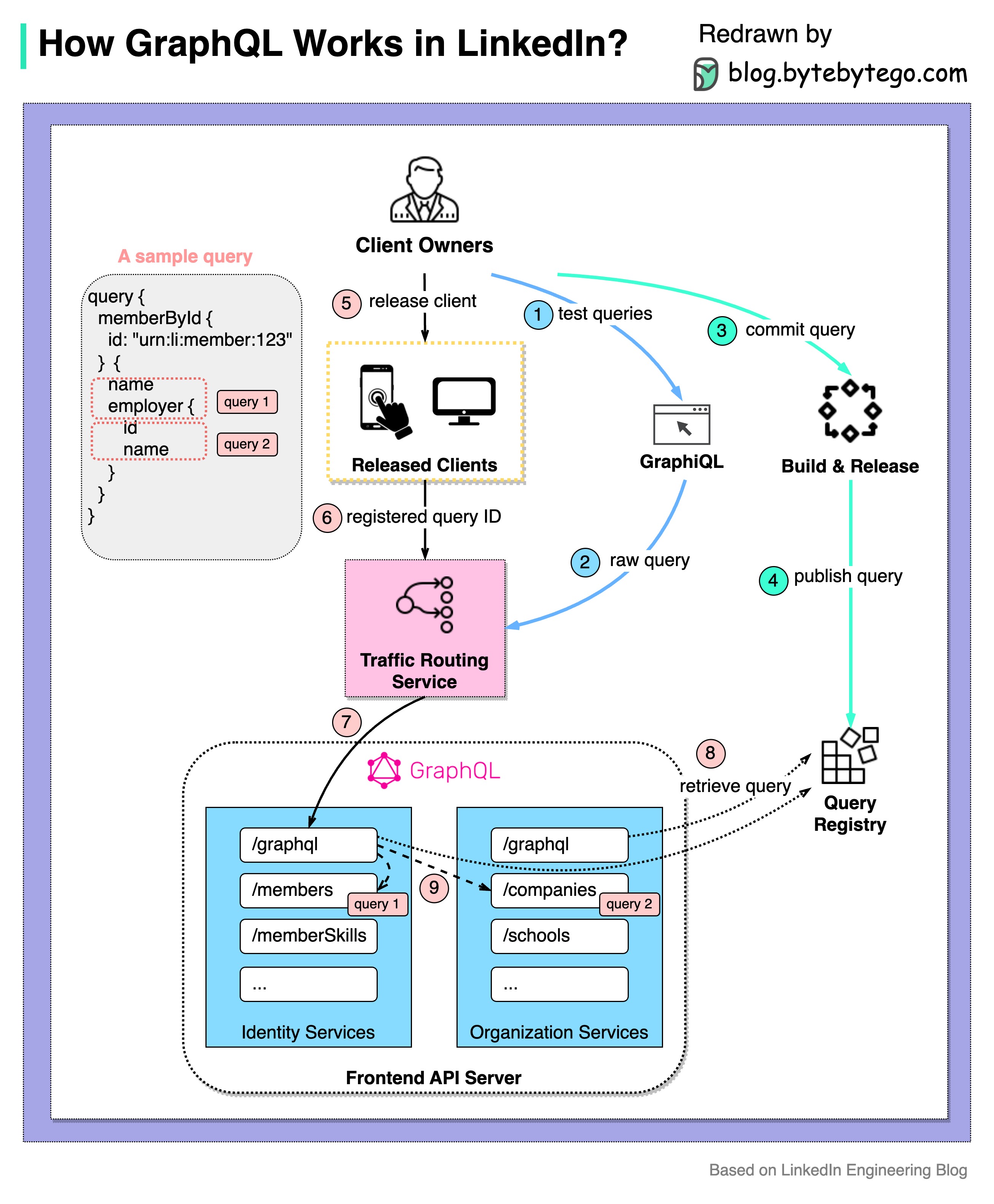Learn how LinkedIn uses GraphQL to improve its development workflow.

The diagram above shows how LinkedIn adopts GraphQL.
“Moving to GraphQL was a huge initiative that changed the development workflow for thousands of engineers…” [1]
The overall workflow after adopting GraphQL has 3 parts:
Steps 1-2: The client-side developer develops a query and tests with backend services.
Steps 3-4: The client-side developer commits the query and publishes the query to the query registry.
Step 5: The query is released together with the client code.
Steps 6-7: The routing metadata is included with each registered query. The metadata is used at the traffic routing tier to route the incoming requests to the correct service cluster.
Step 8: The registered queries are cached at service runtime.
Step 9: The sample query goes to the identity service first to retrieve members and then goes to the organization service to retrieve company information.
LinkedIn doesn’t deploy a GraphQL gateway for two reasons: